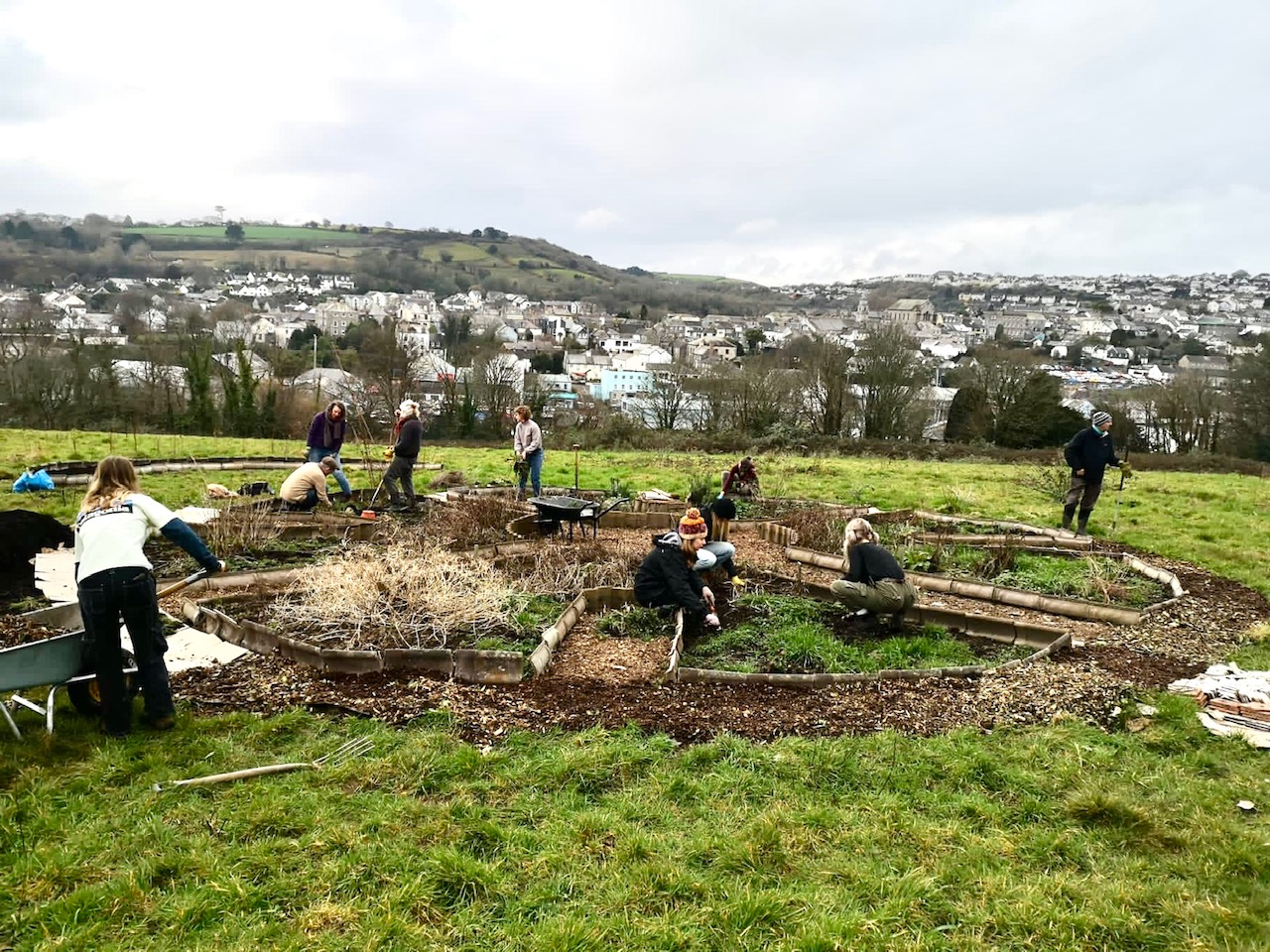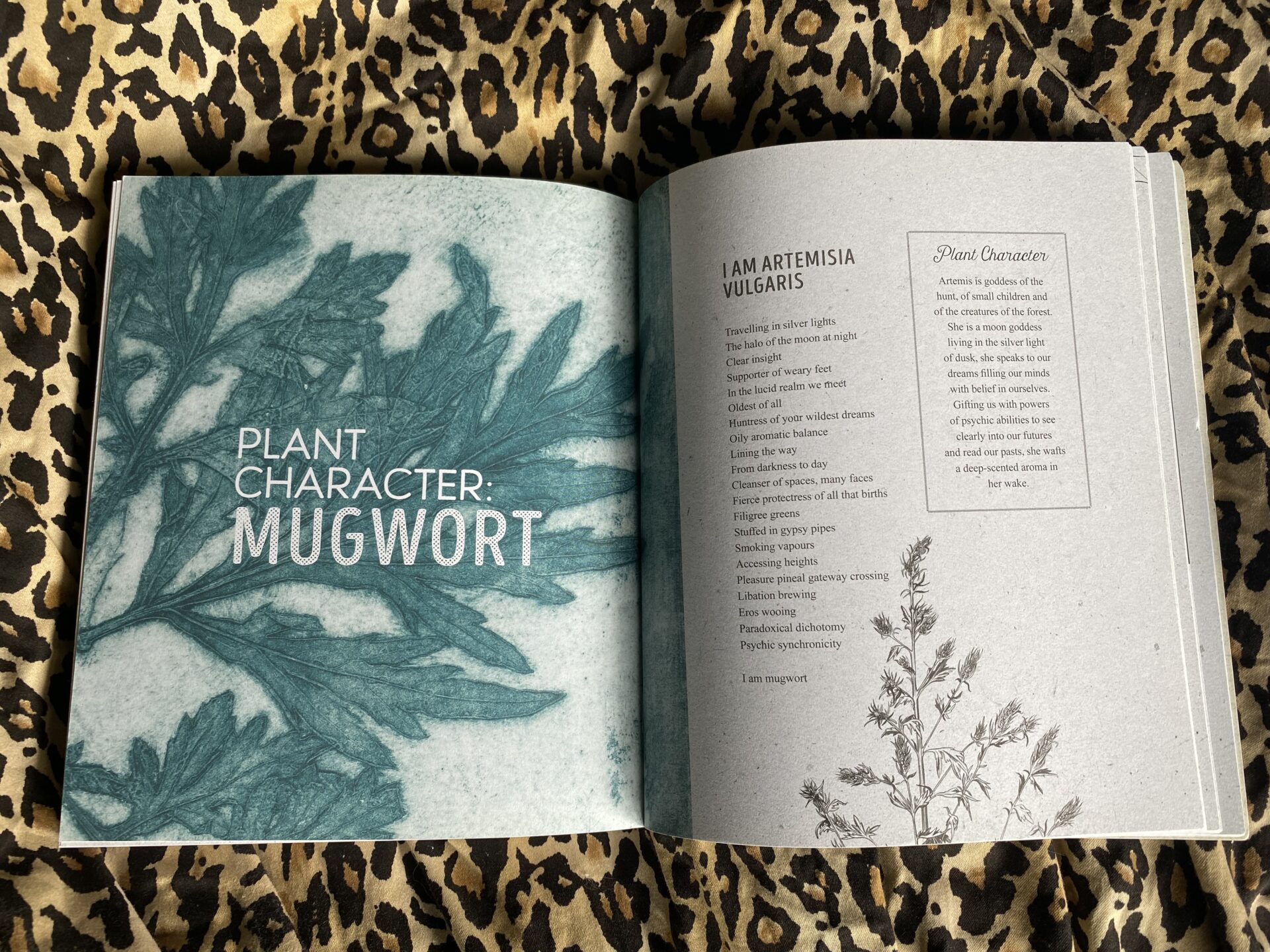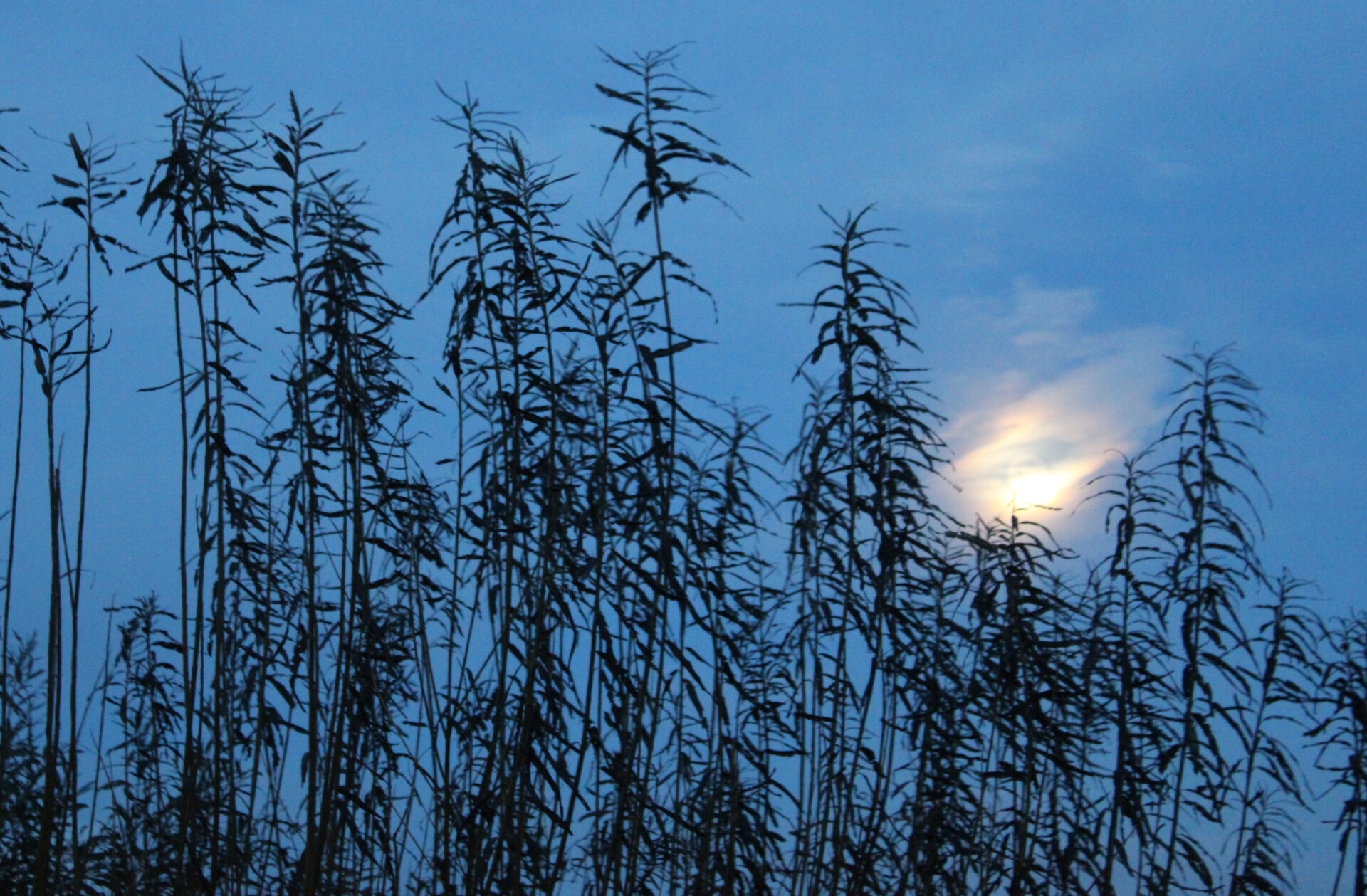Us Seed SistAs are passionate about plants & peoples health, community gardens are intrinsic to our message and plan of CULTIVATING CHANGE, here the lovely Lucy, who is also passionate about herbalism and how the practice helps people, tells us a little about Sudley community garden……….over to Lucy
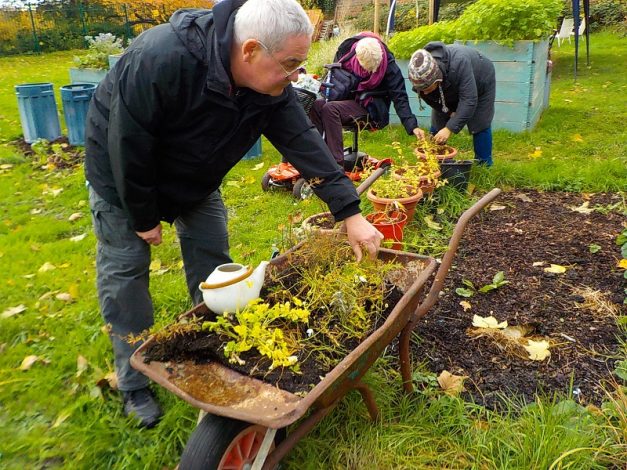
Our community garden in Liverpool is located in an old, dilapidated walled garden within the local park. Like the proverbial Secret Garden, ivy covered walls provide a home to birds and bats and bramble armies make their wild eternal march on empty ground. The park is part of the estate of a Victorian shipping merchant, left in a covenant to the people of Liverpool and therefore protected as a greenspace. The old walled garden was a cutting-edge example of early heated greenhouse technology – fires within a double skinned wall created a type of rocket stove effect along a wall of glasshouses. These are long gone, unused, smashed and left to rot, they were finally pulled down in the 80s. Our little bit of the garden’s history began in 2012, when local residents asked, ‘how can we bring the walled garden back into use for the community?’. The journey has taken an organic and meandering route since then, with different people, phases and energies building gradually into a shared vision.
The community surrounding the garden consists of a high proportion of elders, people with disabilities and long-term health conditions, and families with young children. We decided to start doing some project work with those communities to inform and test out ideas for how the garden could function. We started Forest School holiday clubs for children, Therapeutic Gardening sessions for adults with learning disabilities, brain conditions and stroke survivors, weekly Tai Chi and sessions such as meditation, forest bathing and herb walks. Each year we increased our practice in the garden, in response to people’s interests, passions, skills. We now run a wide variety of sessions for all ages based around the healing power of nature and plants.
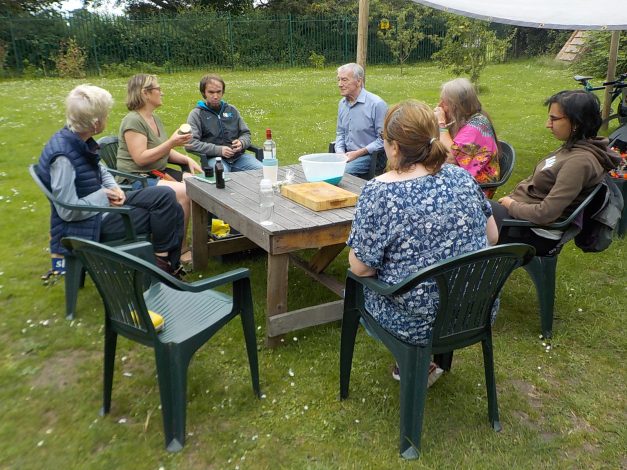
I’ve always wanted to work with herbs in the garden. I was drawn to developing it into a herb garden from the start, I’m not sure why. On a personal level, I’ve long had an interest in using plants, food and herbs to nourish and heal myself and my family. When I first got involved, I was doing a permaculture course and did a case study based on a herb, apothecary or physic garden. But I had a lack of confidence around herbs, with no training or qualifications and only basic knowledge that I’ve picked up from here there and everywhere. I felt inhibited from sharing my passion with others. I considered training as a medical herbalist, but when I found out the cost in time and money, it didn’t seem feasible.
A pivotal moment came about a year ago when I came across an article by the Seed Sistas in Permaculture Magazine. They mentioned a term I’d never heard of before – Hedge Witch. It’s amazing the power a name or identity can have. Everything fell into place when I read those words. I knew that’s what I was, and it felt like some kind of permission, or lovely gift. To realise I’m part of the ancient tradition of using plants to heal and strengthen, of community exchange of information and knowledge, of the empowerment of people to influence their own health – this was a gift. To know that it’s not necessary to be a medical herbalist to be empowered around using herbs, and to share that, was a revelation. I’m super cautious about using only the safest of herbs and would never presume to give medical herbal advice. In fact, the first thing I did was to connect with a local medical herbalist and ask her to come on the journey with us. Sue Sprung of Herbs for Healing is on hand to steer, mentor, advise and collaborate with. But the Hedge Witch discovery somehow gave me permission to pass on the simplest of practices – making a healing balm, a restorative tea, a spring tonic, an immune boosting syrup.
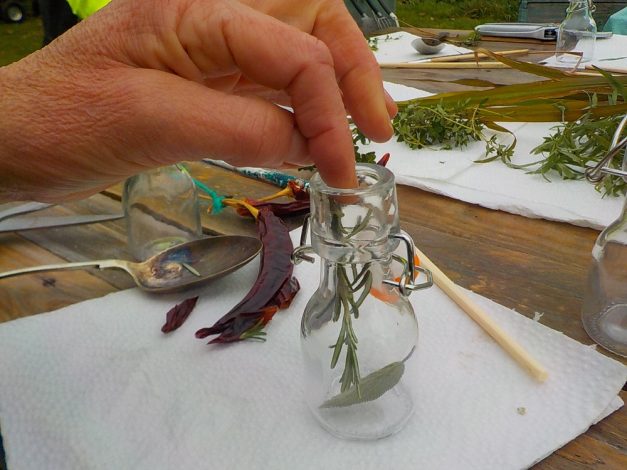
So last year, with our Therapeutic Gardening group, we started doing more of this practice in our weekly sessions. The group have all either had a stroke or major brain condition, leaving a variety of mobility, speech and processing issues. People have gone through considerable traumas and upheavals in their lives, almost always very suddenly. Life turns upside down, and suddenly your career, social life and abilities are transformed. The garden is a place to come that’s outside the everyday sphere of life, often it’s people’s first experience of gardening and growing, and it’s a fantastic medium for active rehabilitation. To practice your grip on a trowel or hand control by broadcasting seeds, your balance without a stick by holding onto a raised bed, your coordination by filling a pot with soil – all these active tasks are a fulfilling form of physiotherapy. The social connection and communication with others is crucial, and for some this will be the only point in the week of seeing people outside the household. Sharing experiences with others in the same situation is empowering, and observing those who are further on in the recovery journey can be a boost. Last season, a member who’s been coming to the group for 3 years, was cutting comfrey for compost tea and recounting how he could never have used secateurs when he first came. The repetitive seasons of the garden provide a baseline to measure progress and change against.
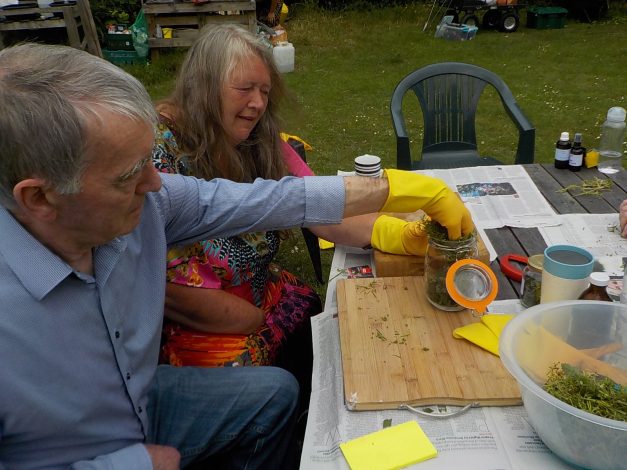
We use the term ‘gardening’ loosely on the project. We do garden and grow organic fruit, veg and flowers, but we also do a wide variety of nature-based activities. Making natural dyes, outdoor cooking, bushcraft, nature art, mindfulness and carpentry are some of the different things we’ve done each season. Last year, following the Hedge Witch revelation, we started working much more with herbs. We made comfrey and lavender balm, elderberry syrup, garden weed tonic, calendula oil, hayfever infusion and lots of different teas. Cooking and heating is done either on the fire pit with tripod, or a camping stove if we need more control. We have to be very careful with contraindications as everyone is on a variety of prescription drugs. There’s a lot of adaptation required – the majority of the group only have the use of one hand, often not the dominant one. We break tasks down into stages to enable people to complete them as independently as possible.
People naturally work together, problem solving to adapt to circumstances, and it’s brilliant to see someone with the use of the left hand working with a partner with the use of the right to make a two-handed job possible. We’ve amassed an array of tools to help make one-handed activity easier, such as a very sharp rolling herb cutter and flower snips that are easier to manipulate than scissors. At times we have to make unforeseen adaptations. When we made elderberry syrup I hadn’t predicted how difficult it would be to get the berries off with a fork – two people working together could get them off but the berries were flying everywhere. So we used a jam straining stand and pinned the elder to it with clothes pegs, enabling someone to ping them off with one hand, straight into the bowl. Having a major health condition is a catalyst for resilience, determination and adaptation. To think that in the statutory world, the members in our gardening group are termed ‘vulnerable’ always gives me cause for a wry smile. They are resourceful warriors.
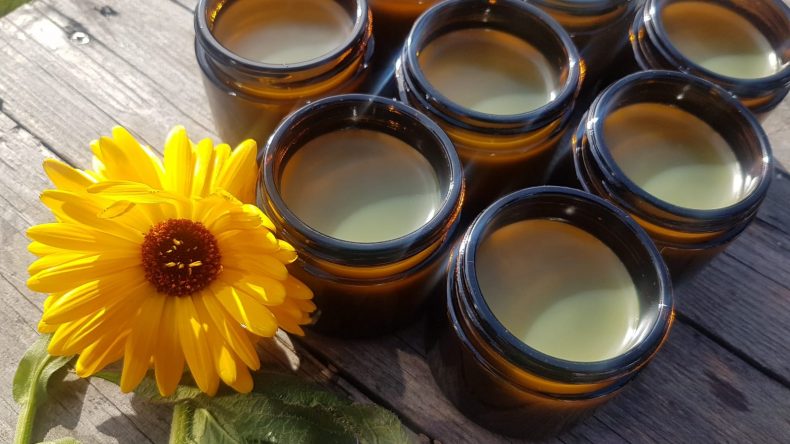
Our increasing use of herbalism over the last year or so has been so well received by our community. There’s a certain excitement that emerges whenever we do anything around herbs, I think it may be a reaction to the over-managed and disengaged nature of our modern health systems. The idea we can pick something, make something and have a positive impact on our health or mood is a radical act that empowers and excites us. It’s a connection to a past and traditions we’ve largely forgotten. We’re starting on the next phase of our journey now, developing a building and putting into place the co-designs we’ve worked on for the garden. We’re developing a multi-purpose healing space, with plenty of room for herbs and botanicals, and facilities to dry, store and process. Visits to the wonderful Dilston Physic Garden have inspired us to become part of that network, and the herby community feels like home. Not only did the Seed Sistas introduce us to Hedge Witches, but also to the inspirational Herbalista and Herbalists without Borders. This urban, radical and social approach to herbalism resonated immediately and has provided a blueprint for how we, a location-based project, can reach out and spread the work to other communities in the city. We’re so excited about this and can’t wait to put energy into building up community herbalism practice and networks locally. Making traditional remedies that people have made in the garden from materials they’ve gathered is a wonderful convergence of nature, gardening and self-healing that really sums up the ethos and aims of our community garden.
Lucy Dossor
Growing Sudley CIC


